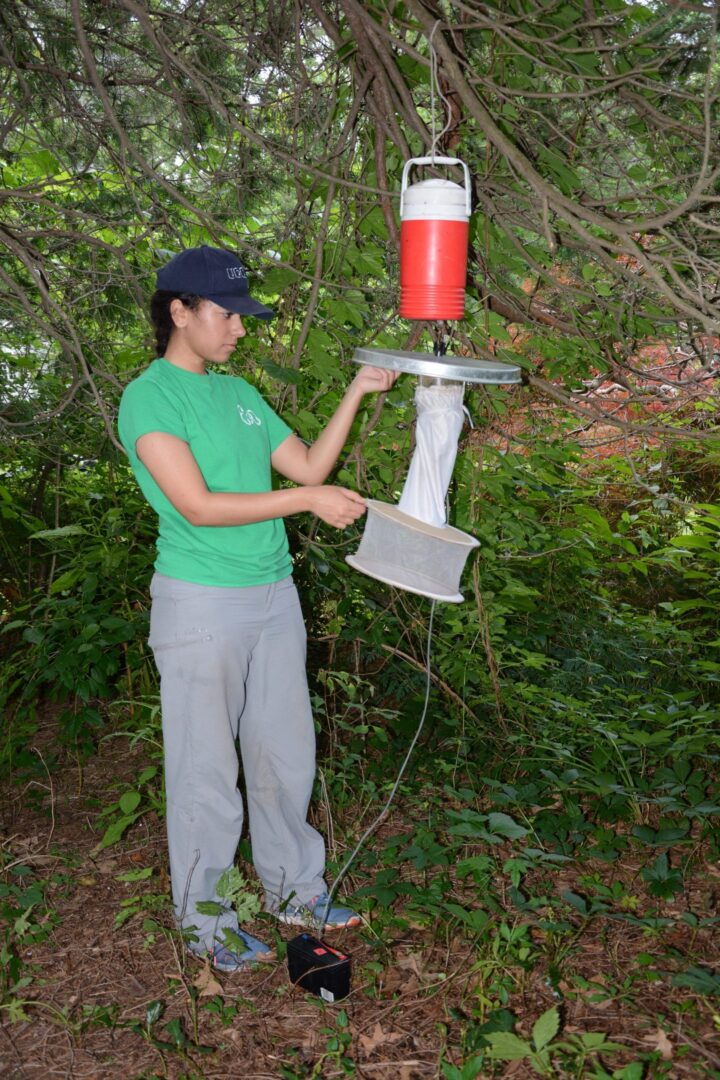After four human cases — and three deaths — of Eastern Equine Encephalitis in Connecticut last summer – the worst year on record in Connecticut – the Connecticut Agricultural Experiment Station hoped to increase their mosquito surveillance program to prepare for the 2020 season.
Those preparations depend on $150,000 of additional funding requested by the station to establish 15 new mosquito trapping locations in southeastern Connecticut, but that money has not yet been approved by legislature which is currently not meeting as precaution against spreading the COVID-19 virus.
“The issue is we don’t want to have to deal with two outbreaks. We already have enough going on with COVID-19. We don’t want to have a situation where we have a second crisis,” said Philip Armstrong, a virologist and medical entomologist at the Experiment Station.
Given the prevalence of the virus last year and the mild winter, Armstrong said he fully expects EEE to return in force this year. Dupuy agreed and predicted that there will likely be an increase of cases for the next two to three years.
EEE has no approved vaccine or treatment, and is usually fatal. The best method for preventing outbreaks, according to scientists, is to diligently monitor mosquito populations in low-lying areas and swamps and to keep residents informed.
“Knowing the prevalence of the virus, the state of the mosquito population and what areas the virus is in is all important to do the best we can to control the spread of the virus to humans,” said Lesley Dupuy, a health scientist administrator and program officer in the virology branch of the National Institute of Allergy and Infectious Diseases.
“If you know where it is and how bad it is you can have a more concentrated program of distributing larvicide or insecticide.”
Adding 15 sites in the Connecticut River Valley area including in East Lyme, East Haddam, Salem, Montville and Colchester would allow the Experiment Station to track the areas that spawned all four cases in 2019 and to protect against the virus this year.
“We are hoping we can start in early June like we have in the past, if we wait much longer we could be missing early detection of the virus,” Armstrong said.
Given the prevalence of the virus last year and the mild winter, Armstrong said he fully expects EEE to return in force this year. Dupuy agreed and predicted that there will likely be an increase of cases for the next two to three years.
“Once it gets seeded into the environment it is more likely to reemerge the following year,” he said.
Without the legislature in session to allocate funding, Armstrong said it’s still possible that the Office of Policy and Management will release some discretionary funds to cover the gap in funding and allow the testing sites to open. However, there has yet to be any word on whether those funds will be released before June.
In comments to CT Examiner on Monday, Kosta Diamantis, deputy secretary of the Office of Policy and Management, said that “without a revised budget, the current expenditures remain as is.”
At least for now, that means that there will be no additional funding for EEE programs.

“I’ve been terrified that this would happen and it has to be dealt with right away,” said Norm Needleman, Essex first selectman and the state senator representing twelve towns in the most vulnerable region. “It’s been in the back of my mind that all we need is to start seeing deaths from EEE right now on top of everything else.”
Needleman said he and other local senators and representatives will be following up with the Governor’s Office on whether or not the funding is to be released or what can be done to aid the Experiment Station in the meantime.
“We don’t agree on a lot of things,” Needleman said in reference to himself and the other area legislators, “but this is one area we know we need to do something.”

